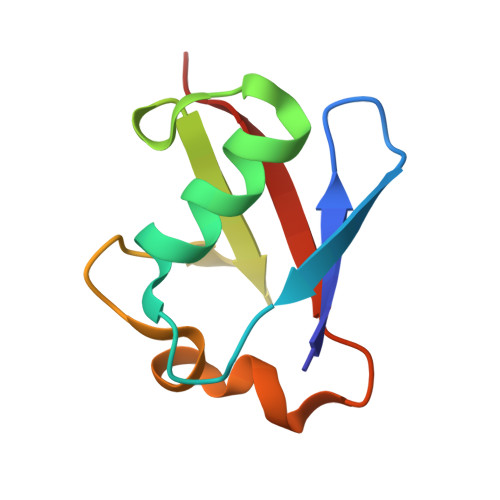An invisible ubiquitin conformation is required for efficient phosphorylation by PINK1.
Gladkova, C., Schubert, A.F., Wagstaff, J.L., Pruneda, J.N., Freund, S.M., Komander, D.(2017) EMBO J 36: 3555-3572
- PubMed: 29133469
- DOI: https://doi.org/10.15252/embj.201797876
- Primary Citation of Related Structures:
5OXH, 5OXI - PubMed Abstract:
The Ser/Thr protein kinase PINK1 phosphorylates the well-folded, globular protein ubiquitin (Ub) at a relatively protected site, Ser65. We previously showed that Ser65 phosphorylation results in a conformational change in which Ub adopts a dynamic equilibrium between the known, common Ub conformation and a distinct, second conformation wherein the last β-strand is retracted to extend the Ser65 loop and shorten the C-terminal tail. We show using chemical exchange saturation transfer (CEST) nuclear magnetic resonance experiments that a similar, C-terminally retracted (Ub-CR) conformation also exists at low population in wild-type Ub. Point mutations in the moving β5 and neighbouring β-strands shift the Ub/Ub-CR equilibrium. This enabled functional studies of the two states, and we show that while the Ub-CR conformation is defective for conjugation, it demonstrates improved binding to PINK1 through its extended Ser65 loop, and is a superior PINK1 substrate. Together our data suggest that PINK1 utilises a lowly populated yet more suitable Ub-CR conformation of Ub for efficient phosphorylation. Our findings could be relevant for many kinases that phosphorylate residues in folded protein domains.
Organizational Affiliation:
Medical Research Council Laboratory of Molecular Biology, Cambridge, UK.















